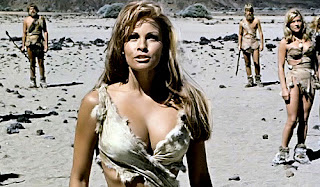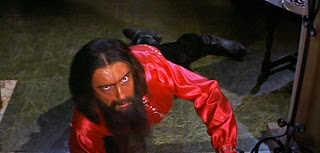Seen as a companion piece to director Darren Aronofsky's critical hit The Wrestler (2008), Black Swan is his love-letter to the operatic world of ballet. Similar to The Wrestler, this is a psychological study of a loyal servant to a chosen profession, who are pushed to the limits both physically and psychologically by the pressures of being good and relevant to their craft. Black Swan throws in a bit of mind-fucking and horror for good measure too.
 Nina (Natalie Portman) is a gifted dancer who is reaching the make-or-break stage in her career. Always being pushed and encouraged by her mollycoddling mother Erica (Barbara Hershey), she hears about a new production of the
Nina (Natalie Portman) is a gifted dancer who is reaching the make-or-break stage in her career. Always being pushed and encouraged by her mollycoddling mother Erica (Barbara Hershey), she hears about a new production of the
The second act sees Nina engage on a mission to become the Black Swan, and this is when things get stranger. Doppelganger’s, reflections that seem to have a mind of their own, and a dabble in lesbianism start to push Nina towards psychological breaking point. It is unfortunately at this point where the film begins a steady decline, after the highly promising first hour or so. The twists and turns of Nina’s ever-declining mental state feature various strange episodes that I felt very familiar with. It had the same predictability as other films focusing on similar issues (Jacob’s Ladder (1990), The Machinist (2004)) and things rarely come as a surprise. Of course this is a film about the theatrical dramatics of ballet, but it begins to get overwrought and camp, when I feel it would have worked better with the style of the tense, slower-paced first act.
Not to knock the film too much, there is still much to enjoy here. The performances are excellent, namely Portman. She is in practically every scene and is every bit as good as you’ve most likely heard. Her transformation from the sweet, dedicated Nina of the first half to the desperate, troubled one of the second is wholly convincing, and that is down to Portman's acting ability. The scene in the cubicle when she calls her mother to tell her she got the part perfectly captures Nina’s joy mixed with utter disbelief and confusion. She’s always been a very good actress, but apart from 2004’s Closer, she’s never really been given a role she can really chew on. Here she chews with aplomb. Like I stated in a previous post, I would not begrudge her the Oscar if she beats my hopeful Jennifer Lawrence for Winter’s Bone (2010).
Black Swan is a very well-made film with amazing scenes of ballet, powerful acting and loose, confrontational camerawork, similar to that of The Wrestler. I just wish Aronofsky had been a bit more original with the horror scenes and offered something genuinely tormenting, similar to what he did with Requiem For A Dream (2000). Probably not for ballet-buffs either, unless you also enjoy scenes of fingernail removal and masturbation.
Directed by: Darren Aronofsky
Starring: Natalie Portman, Mila Kunis, Vincent Cassel, Barbara Hershey, Winona Ryder
Country: USA
Rating: ***
Tom Gillespie
Directed by: Darren Aronofsky
Starring: Natalie Portman, Mila Kunis, Vincent Cassel, Barbara Hershey, Winona Ryder
Country: USA
Rating: ***
Tom Gillespie













